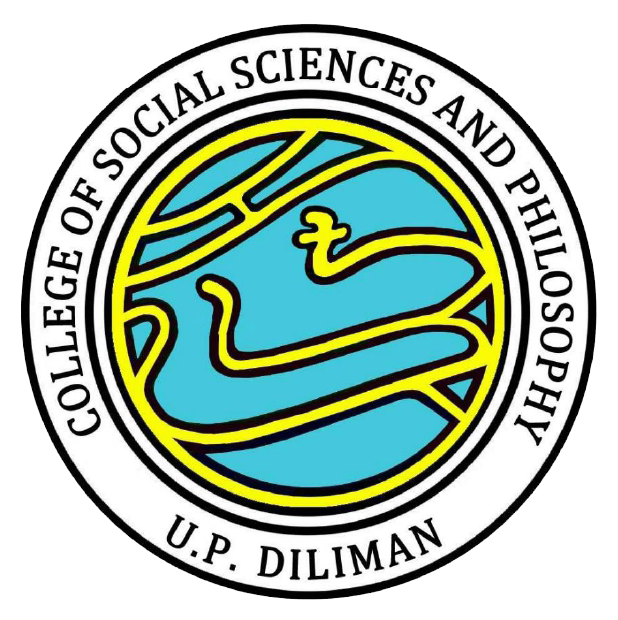23rd Philippine-Spanish Friendship Day International Conference
Published on 07 June 2025 | UP Department of History

Date:
October 16, 2025-October 17, 2025
Convenors:
Asst. Prof. Micah Jeiel R. Perez
Department of History
University of the Philippines Diliman
Asst. Prof. Emmanuel Jayson V. Bolata
Department of History
University of the Philippines Diliman
Department of History
University of the Philippines Diliman
Asst. Prof. Emmanuel Jayson V. Bolata
Department of History
University of the Philippines Diliman
Venue:
Pilar Herrera Lecture Hall, UP Diliman
Abstract:
Social histories have come to dominate the landscape of Philippine historical research. The 21st century has seen exciting developments in economic, institutional, and urban histories, as well as the emergence of groundbreaking research in the history of science. However, some field remains relatively unexplored, such as leisure.
Leisure is often defined as free time or the use of free time, and leisurely activities are characterized by their voluntary nature and the pursuit of enjoyment, relaxation, or self fulfillment. In Filipino, leisure can be translated as libangan and can be divided into passive (listening, reading, or watching) and active (dancing, singing, or playing) categories of activities (Enriquez et. al., 1989). Agoncillo (1990) interpreted popular forms of libangan according to power dynamics between social classes. For him, the Spanish used cockfighting (sabong) as a tool to divert the native population’s energy and attention away from armed revolt. He also associated 19th century leisure with the mestizo and Spanish upper classes. In her exploration of the leisure landscape of Spanish Manila, Camagay (1992) described popular forms of libangan outside of gambling, such as theatrical plays, town fiestas, and strolls around Luneta. Meanwhile, Scott (1994) showed that the archipelago was rich with recreational activities even in pre-colonial times, such poetic singing, making music, and even gambling in games like cockfighting and spinning tops (trumpo). Medina (2005) also explored diccionarios and vocabularios to list children’s games played in the islands from the 1600s, while Lopez (2001) provided an even more robust catalogue of indigenous modes of play with her extensive study on Philippine folk games.
The concept of “leisure” may have only emerged with the urban middle-class in the 19th century, but many modes of recreation and entertainment can be traced back to earlier periods. Such is true for the Philippines, where leisurely activities are deeply liberating yet also limited by what is deemed acceptable and proper. They therefore provide key insights into the functions of society, having been formed out of foundational values and principles of cultural groups. They may represent the state of society at a certain period or reveal patterns of social change. For example, Alma N. Bamero's PhD dissertation "Municipal franchises on rest, leisure and recreation: The Intendencia and its control over social activities in Manila, 1819-1895" (2011) explored the leisure policies of the Spanish colonial government, focusing on the institution of the Intendencia. Bloodsports in general seem to draw much interest among scholars, as others like Bankoff (1991) and Aguilar (1998) have explored the criminal and the spiritual aspects of cockfighting, while Vibal (2022) recently wrote a book on bullfighting. Many have explored the developments of Philippine theater as well. These would include Mojares (1985) who focused on the theater tradition of a single Cebuano barrio; Lacónico-Buenaventura (1994) who studied the theater scene in Manila at the turn of the 20th century; Fernandez (1996) with her essays on Philippine theater history; and Tiongson (1982; 1999; 2024) who has multiple volumes written on the subject. Outside the Philippines, Irving (2010) has written on music in early modern Manila and Martinez (2021) has revisited the role of theater and performance in the same city’s early colonial times. The histories of other forms of libangan have also been extensively studied, yet so much remains to be explored.
Novel approaches can uncover a treasure trove of different insights, as leisure encompasses a broader range of activities than one might initially think. Sport and recreation activities include swimming, hiking, playing games, and other forms of physical or competitive recreation. Leisurely travel would involve visiting notable landmarks or sampling different food. More general forms of recreation include hobbies in the arts (e.g., painting, reading, theater, etc.), sightseeing, journaling, or even addiction (e.g., opium, gambling, etc.). The recreation enjoyed by different social classes, regional perceptions of free time and play, as well as the values ascribed to exercise or entertainment all fall under leisure studies. Research would entail using nonwritten sources that may have been previously ignored, from artifacts like playing cards to spaces like parks or playgrounds. It may also involve a reexamination of sources under a new lens, such as dictionaries and missionary accounts, to find what everyday people—Filipinos and Spaniards both—liked to do with their spare time.
This year’s Philippine Spanish-Friendship Day Conference aims to shine a light on the leisure activities that developed in the Philippines during Spanish rule, whether independently from or directly influenced by the Spanish presence. The two-day conference, to be hosted onsite by the Department of History, University of the Philippines Diliman, brings together scholars and researchers to a) explore the various forms of leisure activities practiced in the Philippines during this period, b) bring to light new sources or perspectives about daily life in our shared past, and c) explore new and unfamiliar themes in an era that many already find familiar.
Conference themes and topics include, but are not limited to:
1. Local and folk concepts and ideas of leisure and play
2. Travel accounts across the Philippines
3. Creative hobbies like painting, writing, woodworking, or public performance
4. Spectatorship in theaters, horse races, and other entertainment spaces
5. Feasts, fiestas, and social celebrations in general
6. Leisure, vices, and crime
7. Outdoor social activities and physical competitions
8. Recreational spaces like parks, playgrounds, and gymnasia
9. State or church policies on leisure and play
10. Transnational or transpacific transference of leisure culture
Deadline for submission of abstracts is on August 1, 2025 (Friday).
Maximum of 500 words per abstract.
Social histories have come to dominate the landscape of Philippine historical research. The 21st century has seen exciting developments in economic, institutional, and urban histories, as well as the emergence of groundbreaking research in the history of science. However, some field remains relatively unexplored, such as leisure.
Leisure is often defined as free time or the use of free time, and leisurely activities are characterized by their voluntary nature and the pursuit of enjoyment, relaxation, or self fulfillment. In Filipino, leisure can be translated as libangan and can be divided into passive (listening, reading, or watching) and active (dancing, singing, or playing) categories of activities (Enriquez et. al., 1989). Agoncillo (1990) interpreted popular forms of libangan according to power dynamics between social classes. For him, the Spanish used cockfighting (sabong) as a tool to divert the native population’s energy and attention away from armed revolt. He also associated 19th century leisure with the mestizo and Spanish upper classes. In her exploration of the leisure landscape of Spanish Manila, Camagay (1992) described popular forms of libangan outside of gambling, such as theatrical plays, town fiestas, and strolls around Luneta. Meanwhile, Scott (1994) showed that the archipelago was rich with recreational activities even in pre-colonial times, such poetic singing, making music, and even gambling in games like cockfighting and spinning tops (trumpo). Medina (2005) also explored diccionarios and vocabularios to list children’s games played in the islands from the 1600s, while Lopez (2001) provided an even more robust catalogue of indigenous modes of play with her extensive study on Philippine folk games.
The concept of “leisure” may have only emerged with the urban middle-class in the 19th century, but many modes of recreation and entertainment can be traced back to earlier periods. Such is true for the Philippines, where leisurely activities are deeply liberating yet also limited by what is deemed acceptable and proper. They therefore provide key insights into the functions of society, having been formed out of foundational values and principles of cultural groups. They may represent the state of society at a certain period or reveal patterns of social change. For example, Alma N. Bamero's PhD dissertation "Municipal franchises on rest, leisure and recreation: The Intendencia and its control over social activities in Manila, 1819-1895" (2011) explored the leisure policies of the Spanish colonial government, focusing on the institution of the Intendencia. Bloodsports in general seem to draw much interest among scholars, as others like Bankoff (1991) and Aguilar (1998) have explored the criminal and the spiritual aspects of cockfighting, while Vibal (2022) recently wrote a book on bullfighting. Many have explored the developments of Philippine theater as well. These would include Mojares (1985) who focused on the theater tradition of a single Cebuano barrio; Lacónico-Buenaventura (1994) who studied the theater scene in Manila at the turn of the 20th century; Fernandez (1996) with her essays on Philippine theater history; and Tiongson (1982; 1999; 2024) who has multiple volumes written on the subject. Outside the Philippines, Irving (2010) has written on music in early modern Manila and Martinez (2021) has revisited the role of theater and performance in the same city’s early colonial times. The histories of other forms of libangan have also been extensively studied, yet so much remains to be explored.
Novel approaches can uncover a treasure trove of different insights, as leisure encompasses a broader range of activities than one might initially think. Sport and recreation activities include swimming, hiking, playing games, and other forms of physical or competitive recreation. Leisurely travel would involve visiting notable landmarks or sampling different food. More general forms of recreation include hobbies in the arts (e.g., painting, reading, theater, etc.), sightseeing, journaling, or even addiction (e.g., opium, gambling, etc.). The recreation enjoyed by different social classes, regional perceptions of free time and play, as well as the values ascribed to exercise or entertainment all fall under leisure studies. Research would entail using nonwritten sources that may have been previously ignored, from artifacts like playing cards to spaces like parks or playgrounds. It may also involve a reexamination of sources under a new lens, such as dictionaries and missionary accounts, to find what everyday people—Filipinos and Spaniards both—liked to do with their spare time.
This year’s Philippine Spanish-Friendship Day Conference aims to shine a light on the leisure activities that developed in the Philippines during Spanish rule, whether independently from or directly influenced by the Spanish presence. The two-day conference, to be hosted onsite by the Department of History, University of the Philippines Diliman, brings together scholars and researchers to a) explore the various forms of leisure activities practiced in the Philippines during this period, b) bring to light new sources or perspectives about daily life in our shared past, and c) explore new and unfamiliar themes in an era that many already find familiar.
Conference themes and topics include, but are not limited to:
1. Local and folk concepts and ideas of leisure and play
2. Travel accounts across the Philippines
3. Creative hobbies like painting, writing, woodworking, or public performance
4. Spectatorship in theaters, horse races, and other entertainment spaces
5. Feasts, fiestas, and social celebrations in general
6. Leisure, vices, and crime
7. Outdoor social activities and physical competitions
8. Recreational spaces like parks, playgrounds, and gymnasia
9. State or church policies on leisure and play
10. Transnational or transpacific transference of leisure culture
Deadline for submission of abstracts is on August 1, 2025 (Friday).
Maximum of 500 words per abstract.


